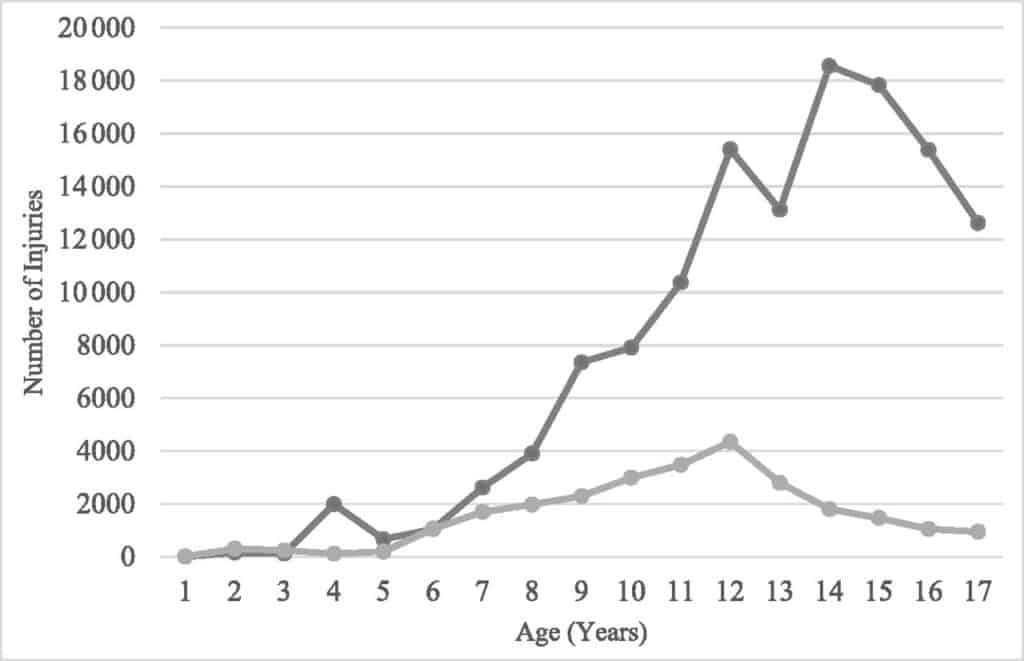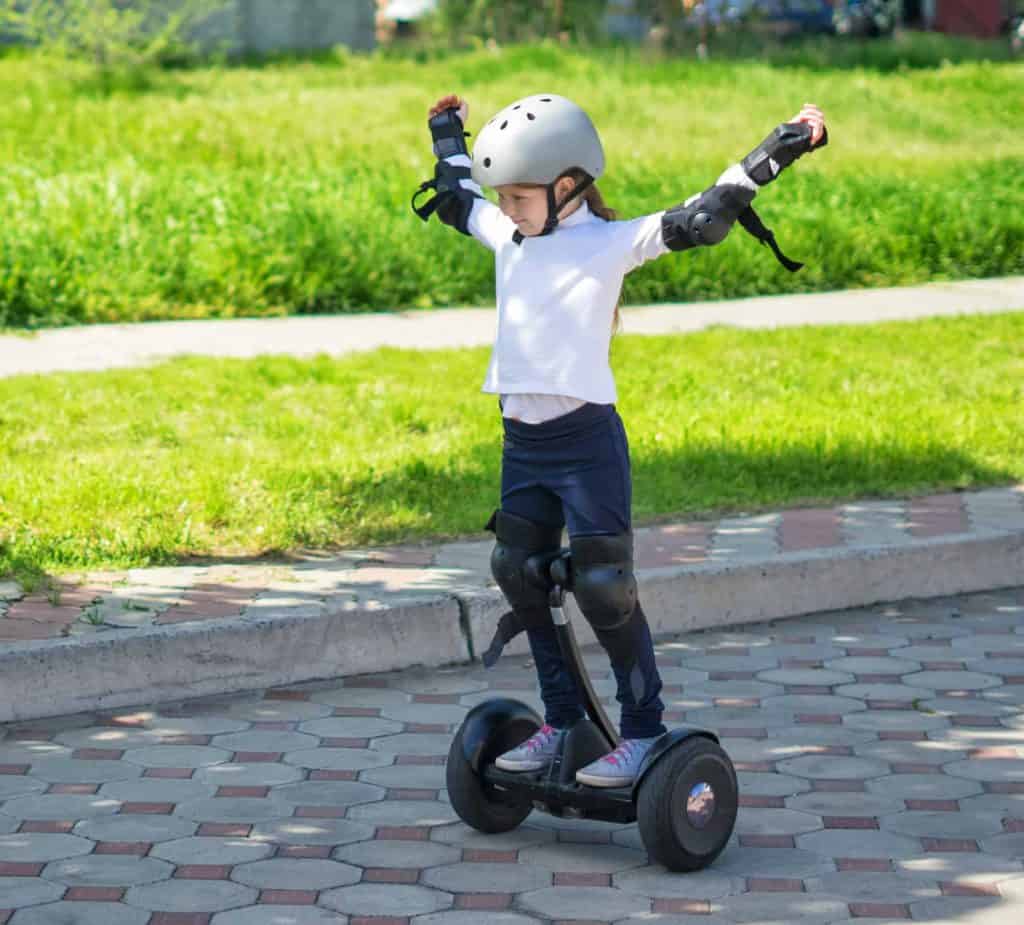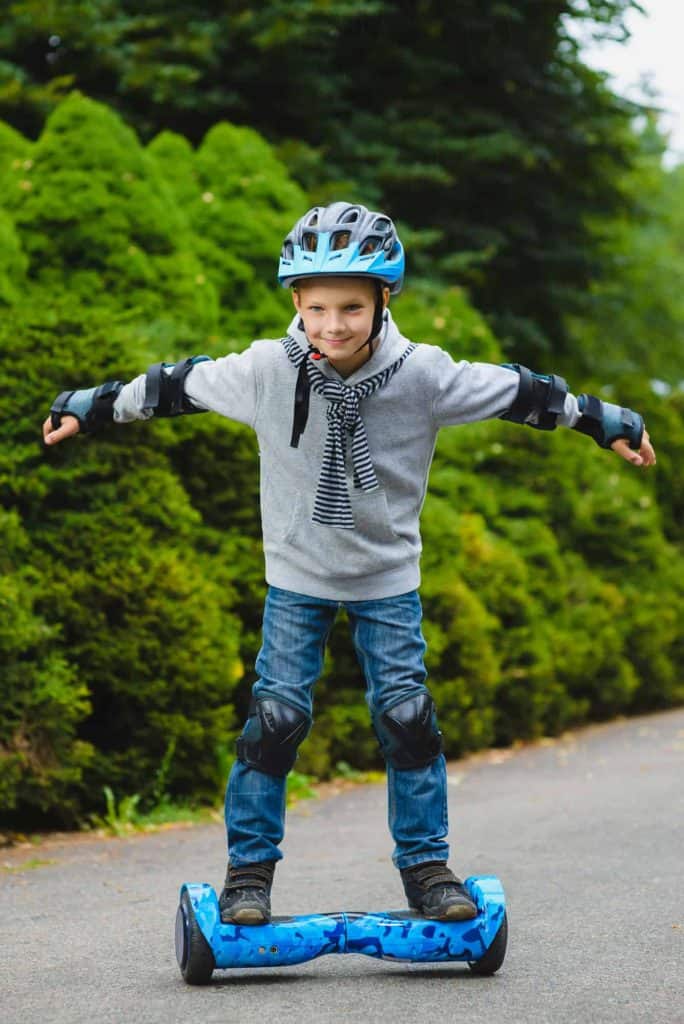If you could sneak a peek at letters to Santa this year from across the nation, you’d find a hoverboard in many a gift list. These flashy gadgets emerged as one of the hottest toys with eBay reporting one sold every 12 seconds in 2015! They are a fun and engaging way to get in some exercise and spend free time.
Adults have fallen in love with them too (read here buying guide). Social media is littered with photos, and viral videos of hilarious adults captured either effortlessly riding these beauties, or landing on their butts in spectacular fails.
While watching viral hoverboard fails may be funny, these gadgets are not without their dangers. Do not use them without the appropriate hoverboard safety gear set. There have been various hazards associated with these two-wheeled self-balancing scooters.
Because of this, it is vital to understand hoverboard safety, to limit the danger to kids or anyone else. Let’s take an in-depth look at how you can use these fun boards safely, and how parents can prevent needless injuries to their kids, or even worse, fatalities.
Hoverboard Injuries
In a recent research study in the April 2018 issue of the American Academy of Pediatrics journal, researchers looked into the most common hoverboard injuries to better understand them.
They found an estimated 26,854 hoverboard and skateboard injuries reported and treated in US emergency rooms between 2015 and 2016. The mean ages for hoverboard and skateboard injuries overall were 11 and 13 years, respectively, with more boys than girls reporting these injuries. Approximately 3% of the patients seen with hoverboard and skateboard injuries, ended up being admitted to the hospital they attended.

Fig 1: Users with hoverboard injuries (light gray) and skateboard injuries (dark gray) presenting to the ED in 2015 and 2016, stratified by age (in years) – Source: American Academy of Pediatrics.
So, what kind of injuries are common in children? Here are a few of the major ones.
Concussions
Concussions are just one of the various head injuries experienced mainly due to falling off a hoverboard. While not many kids end up getting concussed (as it is the worst-case scenario), it still is a head injury, which is overall dangerous.
The best way to avoid concussions or any other type of head injury while gliding is to wear a hoverboard helmet. There are also other types of safety gear to prevent injuries like sprains, wounds, and strains to wrists, elbows, and forearms. You may look nerdy and goofy while wearing hoverboard safety gear (many kids, and surprisingly adults too don’t like it), but it’s not worth the injury and trip to the ER.
“Many of these injuries may be avoided with proper protective gear,” lead author of the research study and emergency physician at New York-Presbyterian/Weill Cornell and Columbia University Medical Center, Dr. Sean Bandzar advised.
Spinal Injuries and Broken Bones
Experts recommend that children under 16 not ride self balancing hoverboards unattended. There is no cure for a spinal injury, and just wearing a hoverboard helmet won’t protect your neck and back. Riders need to gain enough experience to prevent falling off in the first place.
Wrist fractures and broken bones are also common. Forearms, elbows, and leg bones are all at risk. Wearing elbow pads, wrist pads, and knee pads reduce the risk of broken bones somewhat, but nothing beats careful gliding to avoid these injuries altogether.

Essential safety Gear – hoverboard helmet and pads
Safety gear goes a long way to preventing the injuries we’ve just explored. As much as possible, try to wear hoverboard safety gear when gliding on your self balancing hoverboard. This recommendation goes double in the case of children.
Hoverboard Helmets
If you only get one piece of hoverboard safety gear, make sure you start with a protective helmet. Wearing a helmet while hoverboarding offers protection from serious head injuries during falls, preventing brain damage, or even saving the rider’s life. There’s no need to purchase a special helmet, however. Helmets manufactured for rollerblading, cycling, or skateboarding will do the job just fine.
Best hoverboard helmets
Protective Wrist Pads, Elbow Pads, and Knee Pads
Protective pads worn on elbow, wrists, and knees, will also protect from soft tissue injuries and bruises, as well as broken bones. Again, no need to buy specialized pads. The padding gear used by rollerbladers or skateboarders can also be used by hoverboarders.
These protective pads are affordable, retailing between $10 – 25, and will save you a trip to the emergency room.
Safety Lights
When riding in low-light conditions or at night, do not ride without safety lights. Some manufacturers have thought about this problem and included LED lights in their hoverboard for kids, but these are at ground level and are not easily visible by others.
Purchase reflective, clip-on light gear that cyclists wear, and be sure to fix them onto your helmet. You may also use LED reflective safety belt lights or reflective jackets, which are available for both adults and children. Safety lights or reflective gear are vital and enhance visibility and safety.

Tips for Safe Gliding
So, now that you have all your safety gear handy are there any other tips that you should know to help your kids—or yourself—safely ride a two-wheel self-balancing board? There are quite a few tips actually, and we include them here to ensure that you’ve got every base covered.
Handle Your Hoverboard with Care
Ensure that your children ride their hoverboards with care, making sure not to knock it about unnecessarily. Its lithium-ion battery is extraordinarily volatile and has been at the center of many explosion and spontaneous combustion injuries. Know your child’s abilities and urge them to take it slow. Use common sense and teach them to avoid crashing, bumping, or knocking this toy as they ride them in the house, or on driveways or cement walkways.
Do Not Treat Hoverboards as Skateboards
Hoverboards and skateboards look quite similar but by no means are they the same. Skateboards are light-weight and easy to handle, while hoverboards are heavier, battery-powered, and trickier to maneuver.
Never attempt to glide on any ramps, railings, or down a flight of stairs on a hoverboard – that’s a surefire way to get injured. Hoverboards do not have brakes, so only glide with low speeds and on low-traffic approved walkways. Should you follow this, and all other hoverboard safety suggestions, you and your child’s chances of injury remain low.
Enhance Your Visibility
Every time you get on your hoverboard, make sure that you are highly visible. This hoverboard safety tip applies regardless of whether its day or night.
Ensure that your child wears LED safety lights on their helmet as well as a reflector jacket, which can be easily seen by any oncoming motorists. Draw as much attention to yourself as possible, so that people around you can avoid you quickly and safely.
Check out this infographic, which also has useful hoverboard safety tips.
Summing It Up
Hoverboards are fun and novel toys that hit the entertainment market in a big way. However, lots of hazards accompany their use and necessitate the need for hoverboard safety gear. As well as wearing safety gear, there are important safety advice and precautions to be taken into consideration when gliding.
Some essential safety tips to consider include never charging boards unattended or overnight and making sure to buy only high-quality hoverboards from manufacturers with a good track record. Only ride in approved areas because different states and cities have different laws and regulations concerning hoverboards.
Should you have more safety tips and hacks, let us know about them in the comments, and share this article with other parents. We’d love to hear all about your experiences to ensure that our kids enjoy these flashy toys safely and conveniently.



